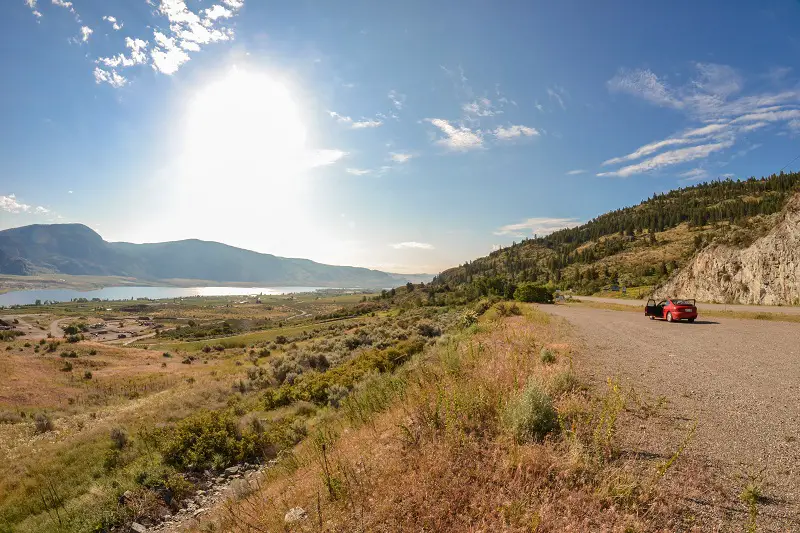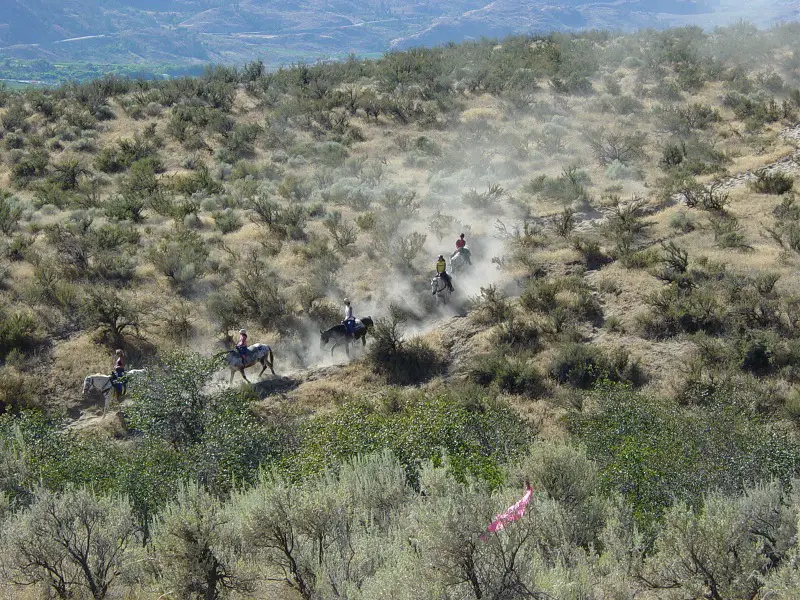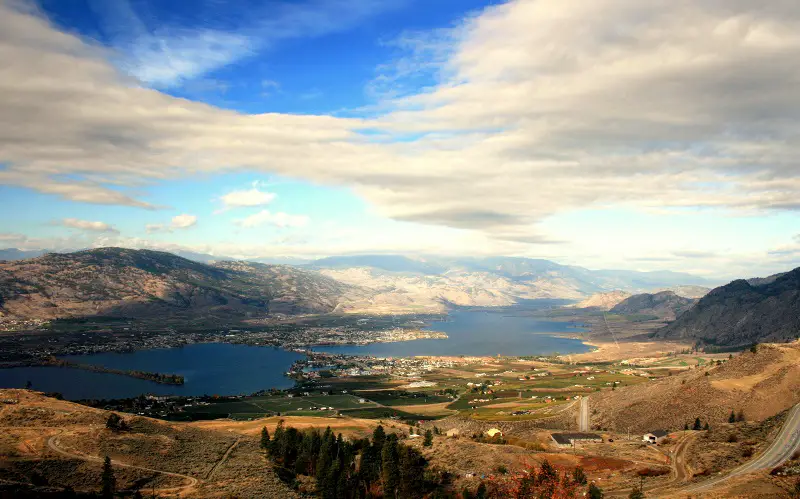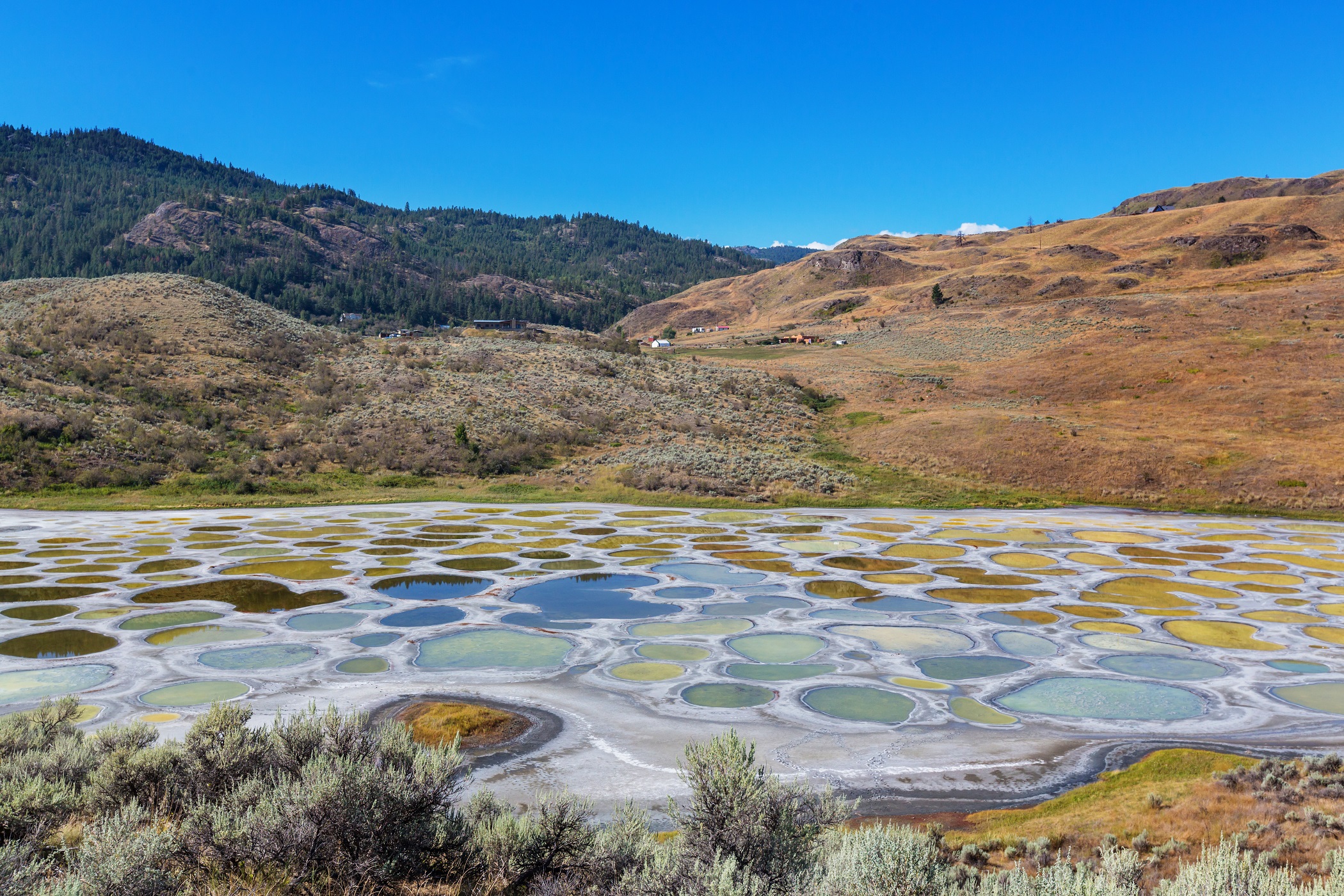An area of 100 hectares in the country gathers cacti, vineyards and golf courses. Canada does not only have frozen deserts, it also has a true sandy desert. It is located in the extreme south of the province of British Colombia, on the border with the United States. Unlike the huge ice fields in the north of the country, the Osoyoos desert in the south is very small: it covers only about 100 hectares.
The Osoyoos Desert

In the hottest place in Canada, the temperature reaches an average of 30 degrees Celsius in summer and not infrequently the maximum temperature exceeds 40 degrees. As a consequence, the landscape is very arid. Only cacti and a few small shrubs grow on the parched soil. The mountains rise to the sky like huge glowing reddish rocks. The air shimmers from the heat and shoots the temperature of Lake Osoyoos up to 24 degrees, making it the hottest lake in Canada. The Osoyoos Desert looks like a western movie set. The landscape only changes where the desert turns into a lake. There, Okanagan Valley winemakers grow between the desert and the lake, in irrigated vineyards, the vines for their best red wines. In the thin green strip between the vineyards some fruit plantations are also squeezed.
Sunny resort in Canada
For Canadians, who cannot enjoy long, hot summers, Osoyoos is a popular destination for sunbathing between early summer and fall. Active tourists cycle and walk around the small town of Osoyoos of just under 5,000 inhabitants. Golfers can choose from a dozen golf courses. Anyone hitting the ball out of bounds on the green fairways of the Spirit Ridge Vineyard Resort & Spa’s nine-hole course should think hard before looking for the ball among the bushes and cacti: signs are everywhere warning of the presence of snakes rattlesnake.
What to do in Osoyoos Desert
To safely observe these animals, go to the Nk’Mip Desert Cultural Center in Osoyoos. The Osoyoos Indian Band Cultural Center not only gives information about the culture of the tribe, but also about the unique nature of the Osoyoos Desert and the seven species of snakes that live there. The Indian Band is a group of indigenous communities, which in Canada are called First Nations. Bob is a member of the Osoyoos tribe, who welcomes tourists at the cultural center, takes them on hikes and bike tours in the desert, and of course also teaches them about snakes. “If someone from our tribe is bitten by a snake, we take them to the hospital,” says Bob. Although the Osoyoos Indians nurture their traditions, they no longer fully trust their centuries-old natural medicine.

The Osoyoos also owns the NK’Mip Cellars Winery, the only winery in Canada that is owned by indigenous people. Already on the wine bottle labels, indigenous winegrowers make it clear that their wines are something special. The labels are adorned with motifs from the indigenous culture. What is not easy is getting used to some of the names. For example, the farm’s Chardonnay is called “Qwam Qwmt” and the wine “Mer’r’ium”.


